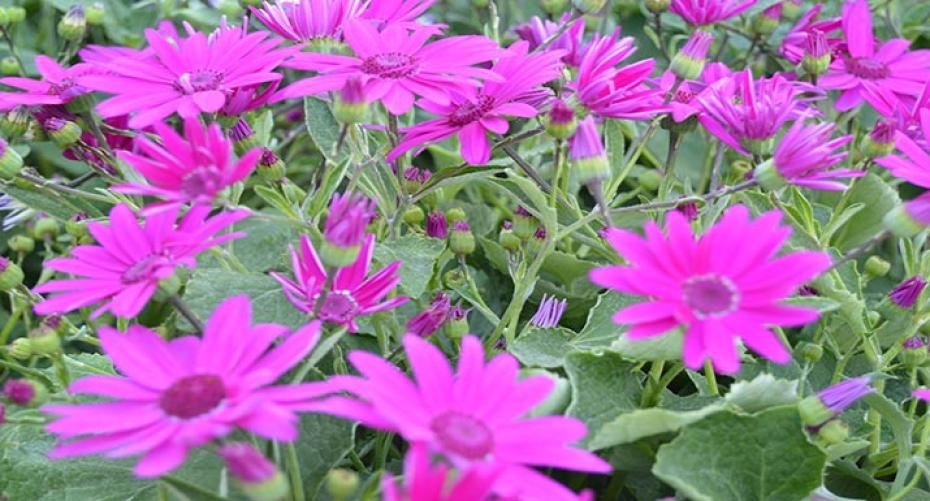Senettis give a huge splash of vibrant colour in a pot on the patio
Senettis are a summer annual, flowering in late spring/early summer, which come in vibrant pinks, blues and bicolours. Senetti is the brand name given to a Pericallis hybrid developed in Japan. They belong to the Aster family and the parents originally came from the Canary Islands. They are usually used as summer bedding and look superb as a specimen pot plant, reaching a height of 30 – 45cm (12 – 18”). They are tender in the UK so cannot be put outside until all danger of frost has passed, usually not until after Chelsea Flower Show.
Position
They like semi-shade with a good airflow to reduce the chance of mildew and botyritis. Their preferred temperature is 10 – 12C (50 – 54F), but they will tolerate a wide range of temperatures.
Planting
They are ideal in a container on the patio so select a pot slightly larger than the one it is in and pot up into good quality peat-free multi-purpose compost with water retention gel and controlled release fertiliser added, as they need quite a lot of food and water. An alternative is to use it as the centre plant of a mixed container of summer bedding plants.

Aftercare
After the first flush of flowers cut it back by about a third and it should give you a second flowering later in the summer. As well as the controlled release fertiliser feed fortnightly with a liquid high potash fertiliser, such as Tomorite. Make sure it is kept damp at all times; on hot summer days you may have to water it in the morning and later on in the day. Keep deadheading to encourage the formation of more flowers.
Pests and diseases
Mildew and botrytis are their main problems but the chances of getting these can be reduced by ensuring a good airflow and not letting them dry out. If you do get them, cut out the worst infected stems and spray with a fungicide to try and prevent it spreading.
They are usually treat as summer bedding and discarded in autumn, but there is some anecdotal evidence that suggests you can keep them through winter. Take them into the house and treat them as a house plant, keeping them cool and just damp. In early spring cut them back to 10cm (4”), re-pot into a slightly larger pot, increase watering and feed with a liquid balanced fertiliser. Once flower buds start to form switch the feed to a high potash fertiliser watered in every fortnight.


